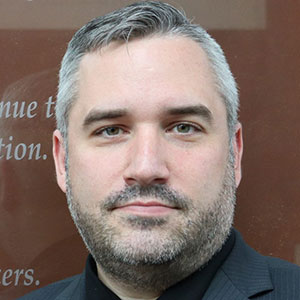

Columns/Blogs
Workplace Mental Health
Culture
Fear-based workplace can hinder productivity – leaders play a role to fix it
By Bill Howatt and Troy Winters

How does fear impact workplace cultures?
Fear can be defined as a real or perceived threat of negative consequence. Workers who live in fear are less likely to speak their minds for fear of reprisal or career impact. The result of fear goes beyond not speaking up, not providing ideas, not pointing out a risk or weak point in the workplace, or offering a suggestion.
Innovation and learning happen best when workers feel safe to try, without fear of reprisal if they make a mistake and fail. Rather than punish, leaders who want to create a psychologically safe workplace that can spark learning cultures encourage teams to try their best. Leaders look for learnings instead of assessing blame when mistakes happen.
W. Edwards Deming pioneered the Plan/Do/Check/Act approach to continual improvement that forms the basis of most management systems related to health and safety. Deming advised, “The aim of leadership is not merely to find and record failures of men, but to remove the causes of failure… If the system creates fear among employees, the chances of tainted data increases.”
Deming’s key point is until you get the fear out, you will not get honesty, meaning, workers will be less likely to try new ideas, innovate, or report when bad things happen. Leaders who want to facilitate a psychologically safe workplace must focus on driving out fear.
Types of Errors
Leaders should understand the kinds of mistakes from which they can learn lessons to be more tolerant. The UK’s Health and Safety Executive tracks human errors as part of its information on incident investigating. Except for intentional violations like willingly breaking the rules, there are skill-based errors (i.e., slips and lapses) and rule- or knowledge-based mistakes.
Skill-based errors
- Slips happen when a person automatically performing a familiar task does something wrong, like flipping the wrong switch on a control panel. Lapses occur when an action is performed out of sequence, or a step is missed. Slips and lapses are most common when someone is interrupted or rushed. Skill-based errors are generally easy to predict, and redundancies can be built into systems to prevent them.
- Mistakes: Rule-based mistakes happen when someone applies the wrong rule because they misinterpret a situation. Knowledge-based mistakes happen when a person faces an unfamiliar situation with no rules and uses their knowledge to work from first principles but reaches a wrong conclusion.
Regardless of the error, it is rarely just a worker’s fault. Making a mistake does not mean an employee is a poor worker. Errors do not happen in isolation. When an error is identified, consider how the workplace influenced the actions and behaviour so that the team can learn from the mistake.

Strategies for facilitating mental health in workplace
Some questions a leader can ask about a mistake:
- Did the worker feel unsafe asking for information to make the right decision?
- Was the worker adequately supported and had access to support?
- Was the worker provided clear direction and expectations that met their training and skill level?
- Was the worker trained on appropriate procedures or expectations for what was asked of them?
- Was the work planned, or were tasks added in the middle of a project?
- Were the expectations for output realistic and achievable under the conditions?
Disciplining for errors
Unless there was a deliberate and malicious act, punishing workers for errors will be counterproductive, decrease lessons, reduce the likelihood of future errors being reported, and drive the culture of fear.
If a team constantly fears being punished for errors, it will be nearly impossible for a leader to develop authentic relationships because people will be afraid to engage on a meaningful level.
Tips for driving out fear
Considerations from Driving Fear Out of the Workplace by Ryan and Oestreich:
- Give credit for good work instead of blaming each other.
- Accept that mistakes happen and support your team to figure out how to do things differently.
- Share information openly and collaborate on important issues.
- Speak in terms of “we” rather than “us and them.”
- Focus on the common purpose and do not get sidetracked by differences in the details.
- Value your team’s background and experience and consider everyone’s ideas and recommendations.
- Encourage team members to feel safe to voice concerns and criticisms and acknowledge conflicts and differing opinions.
- Speak positively about the work the team has done and will do.
- Point out deficiencies while exploring ways to overcome them rather than laying blame.
- Don’t dress down underperforming team members in public. Ensure they understand you are trying to make them better, not punish them.
- Lead by example by taking responsibility rather than making excuses.

Dr. Bill Howatt is the Ottawa-based president of Howatt HR Consulting.

Troy Winters is a senior health and safety officer at the Canadian Union of Public Employees (CUPE) in Ottawa.
The Psychologically Safe Workplace Awards (PSWAs) are a national, evidence-based annual competition that measures the employee experience with respect to workplace mental health.
Print this page
